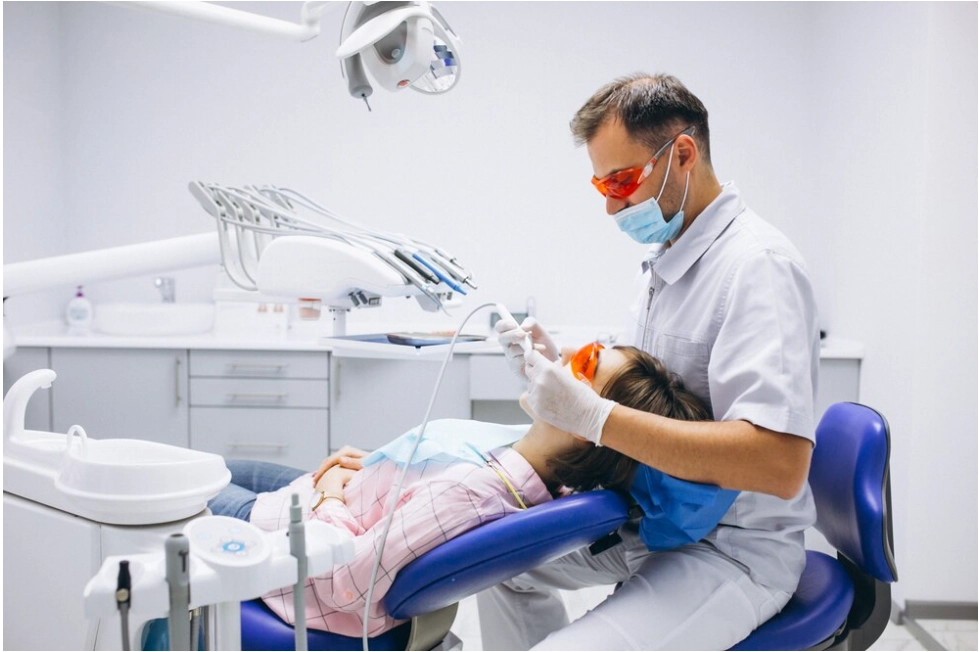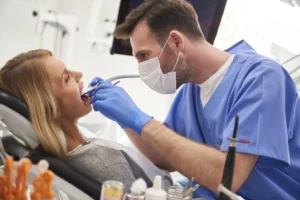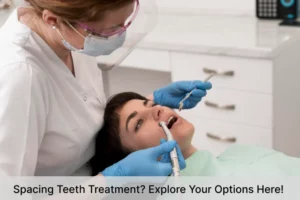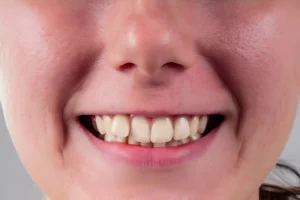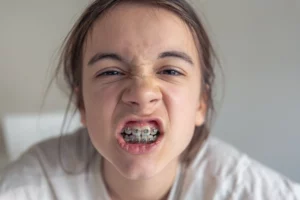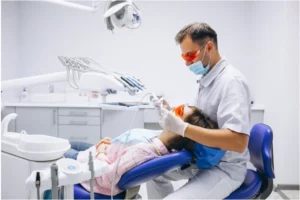Orthodontic treatment has come a long way, offering various options to help individuals achieve that perfect, confident smile. In this comprehensive guide, we’ll explore the different types of braces available, each with its unique features and benefits.
Definition of Braces
Braces, integral to orthodontic care, are specialised devices meticulously designed to address dental irregularities. Braces use brackets, wires, and bands by applying gentle and controlled pressure on teeth, guiding them into proper alignment. This targeted force plays a pivotal role in rectifying various issues, including misalignments, overcrowding, and bite irregularities. Braces serve as transformative tools, facilitating the gradual repositioning of teeth for optimal oral health and function.
Importance of a Perfect Smile
Beyond the realm of aesthetics, a confident smile holds profound significance in enhancing not just physical appearance but also mental and emotional well-being. Scientifically, an aesthetically pleasing smile is associated with improved self-esteem, fostering a positive self-image and interpersonal confidence. As individuals undergo orthodontic treatments like braces, the journey toward a perfect smile becomes a holistic endeavour, contributing to dental health and a profound sense of overall wellness and self-assurance.
Exploring types of Braces
Traditional Metal Braces
Among the diverse types of braces available, traditional metal braces are popular due to their proven effectiveness in addressing various orthodontic issues. This category represents a foundational option known for reliability in delivering comprehensive teeth alignment.
Composition and Structure
The structure of traditional metal braces encompasses metal brackets that are securely attached to each tooth. Durable wires connect these brackets and are further reinforced using rubber bands. This configuration forms the basis for applying controlled pressure, enabling the gradual adjustment and alignment of teeth throughout the treatment.
Pros:
- Metal braces are renowned for their durability and effectiveness in correcting a variety of orthodontic issues.
- Their cost-effectiveness makes them a more affordable choice than alternative orthodontic options, ensuring accessibility for a wide demographic.
- Traditional metal braces boast a proven track record of successfully straightening teeth over the long term.
Cons:
- The primary drawback of traditional metal braces lies in their visibility, presenting a potential cosmetic concern for individuals seeking a more discreet orthodontic option.
- Some people may feel self-conscious about the appearance of metal braces on their teeth.
- Additionally, maintaining oral hygiene around metal braces can be more challenging compared to some alternative orthodontic options.
Ceramic Braces
As we explore the diverse landscape of orthodontic options, Ceramic Braces emerge as a noteworthy alternative. Specially crafted for those seeking a less conspicuous solution, ceramic braces introduce a distinctive approach to teeth alignment.
Aesthetic Benefits of Ceramic Braces
- Primary appeal of ceramic braces lies in their discreet appearance, providing individuals with a subtle and refined aesthetic.
- This feature resonates particularly well with those seeking a more inconspicuous orthodontic treatment.
- Ceramic braces offer a visually subtle alternative, attracting individuals who prioritize both effectiveness and a discreet look in their journey toward achieving a perfect smile.
Disadvantages of Ceramic Braces
- While ceramic braces excel in aesthetics, they do come with certain drawbacks. One significant disadvantage is their potential for staining.
- The ceramic material used in these braces can absorb pigments from food and drinks, leading to discoloration over time.
- This staining can compromise the initially discreet appearance of the braces, requiring extra attention to oral hygiene and potential adjustments.
Lingual Braces
In the realm of orthodontics, Lingual Braces emerge as a distinctive option. Unlike traditional braces, Lingual Braces are strategically placed on the backside of the teeth, presenting a novel approach to teeth alignment.
Concealed Appearance
The hallmark of Lingual Braces lies in their concealed appearance. This innovative placement directly addresses cosmetic concerns, providing a discreet solution for individuals who seek effective orthodontic treatment without the visible presence of braces on the front of their teeth.
Advantages of Lingual Braces
- Lingual Braces present a significant advantage in terms of aesthetics as they are concealed behind the teeth, providing a discreet orthodontic option.
- Lingual Braces offer effective tooth correction while maintaining a visually subtle profile, aligning with the preferences of those seeking a less noticeable orthodontic solution.
Considerations for Lingual Braces
- Lingual Braces come with certain considerations. The adjustment period may initially pose a challenge as individuals adapt to the unique placement behind the teeth.
- Temporary speech challenges can also be experienced during this period. While these challenges are manageable and often temporary, individuals should weigh them against the advantages of concealed aesthetics when deciding on the suitability of Lingual Braces for their orthodontic needs.
Invisalign
Within the spectrum of orthodontic treatments, Invisalign stands out as a revolutionary approach to teeth alignment. This innovative system diverges from traditional braces, introducing a transformative method that utilises transparent aligners.
Transparent Aligners
The hallmark of Invisalign lies in its use of virtually invisible aligners. Crafted from an explicit, durable material, it discreetly fits over the teeth, making them nearly invisible. The unique feature of being removable adds a layer of flexibility to the treatment process, allowing individuals to indulge in their favourite foods and maintain optimal oral hygiene without the constraints associated with traditional braces.
Lifestyle Advantages
- Invisalign offers distinct advantages tailored to various lifestyles. The ability to remove the aligners facilitates uncomplicated meals and ensures thorough dental care. However, it’s essential to recognise that Invisalign may not be optimal for complex orthodontic cases where other braces could provide more comprehensive solutions.
- Understanding these considerations empowers individuals to make informed decisions based on their specific orthodontic needs when exploring the types of braces.
Disadvantages for Invisalign
- While Invisalign offers lifestyle advantages, it comes with certain considerations. The removable nature of the aligners requires consistent wear for optimal results, and forgetting to wear them can impact treatment effectiveness.
- Additionally, Invisalign may not be suitable for complex orthodontic issues, such as severe misalignments or specific tooth rotations. Understanding these nuances ensures individuals can weigh the lifestyle benefits against potential limitations, allowing them to make informed decisions regarding the suitability of Invisalign for their orthodontic journey.
Self-Ligating Braces
Self-ligating braces are braces that help straighten your teeth. They work like regular braces but have special brackets to hold the wire. Unlike traditional braces with rubber bands, these braces connect the wire directly to the shelves, adjusting easier. They come in clear or metal and are comfy and less noticeable. There are different types of braces, and self-ligating braces need fewer adjustments, making them easier for both patients and doctors.
Pros of Self-lighting Braces
Reduced friction
The smooth design of self-lighting braces minimises friction between the arch wire and brackets, leading to faster tooth movement and potentially shorter treatment times.
Less discomfort
Eliminating the need for ligatures reduces the risk of irritation and poking from loose elastics or wires.
Cons of Self-lighting Braces
Cost
Self-ligating braces may be more expensive than traditional braces, impacting the overall cost of orthodontic treatment. Individuals should weigh the benefits against their budgetary considerations.
Availability
Not all orthodontic cases may be suitable for self-ligating braces. Availability can vary, and certain complex orthodontic issues may require alternative treatments. It’s essential to consult with an orthodontic professional to determine the most suitable option for specific cases.
Choosing the Right Braces
Consultation with an Orthodontist
When embarking on the orthodontic treatment journey, a pivotal starting point is the consultation with an orthodontist. These aspecialised consultations serve as a foundation, providing individuals with a comprehensive understanding of their unique dental needs. The orthodontist evaluates teeth alignment, bite issues, and oral health to recommend the most suitable braces.
Factors to Consider
Choosing the right braces involves a nuanced consideration of several vital factors. Lifestyle, budget constraints, and treatment goals are paramount in this decision-making process. Orthodontic technology has evolved to offer various braces, each catering to different needs. Evaluating these factors enables individuals to make informed choices that align with their preferences and ensure optimal treatment outcomes.
Personal Preferences and Lifestyle
The alignment of personal preferences with the chosen type of braces significantly impacts the overall success of orthodontic treatment. Whether one opts for traditional metal braces, discreet ceramic braces, innovative Invisalign, or other braces, the choice should resonate with individual preferences. This alignment fosters better adherence to treatment plans, as individuals are more likely to embrace the process when it aligns with their lifestyle and aesthetic preferences.
The array of types of braces available underscores the importance of tailored decision-making, ensuring that orthodontic treatment is practical and aligned with everyone’s unique needs and preferences.
Common Misconceptions about Braces
Navigating the world of orthodontics involves debunking prevalent myths surrounding braces. Dispelling these misconceptions is crucial in fostering informed decision-making. One common myth is that braces are solely for cosmetic purposes. However, orthodontists can clarify that braces address aesthetic concerns and important oral health issues, promoting a comprehensive understanding of their benefits.
Addressing Concerns
Patients often harbour concerns about orthodontic treatment’s discomfort, appearance, or duration. Orthodontists play a pivotal role in addressing these concerns. Providing accurate information and personalised insights empowers patients to make decisions aligned with their needs. Addressing concerns about different types of braces, such as the visibility of metal braces or the adjustment period with Invisalign, contributes to a transparent and supportive orthodontic experience.
Realistic Expectations
Setting realistic expectations is a fundamental aspect of any orthodontic journey. Patients may anticipate instant results or need to pay more attention to the commitment required. Orthodontists guide individuals in understanding the gradual nature of teeth alignment and the timeframes associated with different types of braces. By fostering realistic expectations, patients are more likely to stay committed to the orthodontic process, appreciating the journey toward a healthier, more aligned smile.
Essentially, dispelling myths, addressing concerns, and setting realistic expectations contribute to a well-informed and positive orthodontic experience. The diverse types of braces available underscore the need for accurate information, allowing individuals to make choices that align with their preferences and ensure a successful orthodontic outcome.
The Orthodontic Process
The orthodontic journey commences with a comprehensive initial assessment, a crucial step toward a perfect smile. During this phase, orthodontists meticulously evaluate various factors, including teeth alignment, bite issues, and oral health. This thorough assessment not only aids in identifying specific dental needs but also serves as the foundation for recommending the most suitable type of braces tailored to an individual’s unique circumstances.
Fitting Braces
The fitting of braces marks a significant milestone in the orthodontic process. Armed with insights from the initial assessment, orthodontists embark on the careful placement of braces. This process involves attaching brackets, wires, or aligners according to the prescribed treatment plan. Types of braces, such as traditional metal braces, ceramic braces, or Invisalign, are fitted with precision to initiate the gradual journey of teeth alignment. Regular adjustments are made to ensure optimal effectiveness, highlighting the importance of selecting suitable braces for an individual’s specific needs.
Follow-up Appointments
Regular follow-up appointments constitute an integral aspect of the ongoing orthodontic process. These appointments provide orthodontists with opportunities to monitor the progress of teeth alignment and make necessary adjustments to the braces. The choice of types of braces may influence the frequency and nature of these appointments. Whether tightening traditional metal braces or assessing the fit of removable Invisalign aligners, these follow-ups ensure that the orthodontic treatment stays on course, maximising the chosen braces’ effectiveness.
Caring for Braces
Oral Hygiene with Braces
Effective oral hygiene is paramount throughout orthodontic treatment, especially when types of braces are involved. Regular brushing and flossing become crucial tasks in maintaining the health of teeth and gums. For those with traditional metal braces, extra care is needed to clean around brackets and wires. Similarly, individuals with ceramic braces or Invisalign must adhere to specific hygiene routines to prevent discolouration or plaque buildup. The type of braces plays a role in determining the meticulousness required for oral care, emphasising the importance of tailored hygiene practices.
Dietary Considerations
Dietary considerations are integral to caring for braces, regardless of the type of braces chosen. Certain foods can pose challenges during orthodontic treatment. For example, individuals with traditional metal braces should avoid sticky or hard foods that may damage the braces. Wearers of ceramic braces must be mindful of potential staining caused by foods like berries or coloured beverages. Those with Invisalign enjoy the advantage of removing aligners for meals, providing flexibility in dietary choices. Understanding these dietary nuances is essential for individuals with different types of braces to ensure the longevity and effectiveness of their orthodontic treatment.
Simply Braces for Your Perfect Smile Journey
In the diverse landscape of orthodontic options, the quest for a perfect smile is a nuanced exploration. Traditional metal braces, lauded for their proven effectiveness, stand alongside ceramic braces with a focus on aesthetic appeal. Lingual braces discreetly conceal, while Invisalign leads the way in providing both discretion and flexibility. Self-ligating braces offer expedited treatment, but their suitability necessitates careful consideration
In collaboration with Simply Braces, the pursuit of a perfect smile transforms into a journey marked by expertise and individualized care. Enhanced confidence, improved oral health, and lasting well-being await those who trust Simply Braces for their orthodontic needs.
Embark on this transformative orthodontic experience with Simply Braces, where dedication meets informed decision-making, paving the way for a radiant, confident smile that lasts a lifetime.


